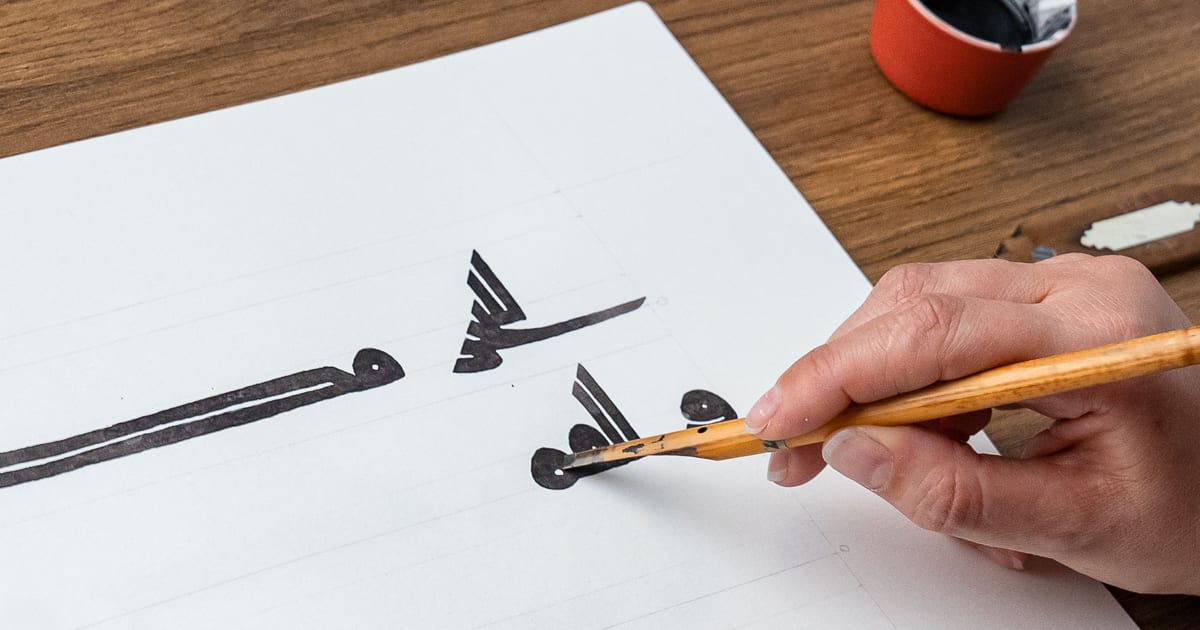
A Beginner’s Guide to Arabic Calligraphy
Arabic calligraphy, with its intricately detailed designs, has held a significant place in the cultural and artistic realm of the Middle East for centuries. For those unfamiliar, this Guide to Arabic Calligraphy serves as an introduction to the expansive world of this ancient art form, offering a glimpse into its rich history, diverse styles, and modern interpretations.
Guide to Arabic Calligraphy: Navigating Through Styles
For a novice, understanding Arabic calligraphy can seem daunting due to its diverse styles, each with its distinct characteristics. However, with a guided approach, one can begin to appreciate the nuances that make each style unique.
Kufic Calligraphy:
Known as one of the oldest forms, Kufic calligraphy originates from the city of Kufa in Iraq. Its angular and geometric design makes it instantly recognizable. Ancient monuments and early Quranic manuscripts often feature this style.
Dewani and Thuluth:
These styles, developed during the Ottoman era, are characterized by their curvaceous and flowing designs. While Dewani was reserved for official documents, Thuluth graced manuscripts, tombstones, and ceramics.
Naskh, Rayhani, Muhaqqaq, and Riqa:
These forms are renowned for their legibility, making them popular choices for transcribing religious texts, especially the Quran. Their rounded and flowing scripts reflect the fluidity of spoken Arabic.
The Essence of Arabic Lettering
Central to Arabic calligraphy is the Arabic lettering system, known as Al-abjadiyah. Comprising 28 consonants, the letters take different forms based on their placement in a word. Intricacies like these underscore the depth and detail involved in mastering Arabic calligraphy.
Islamic Calligraphy: Beyond Religion
While deeply rooted in religious traditions, Islamic calligraphy has extended its reach into various realms, from poetry to prose. This form of Arabic lettering art not only represents religious verses but also embodies the ethos of the Islamic culture, reflecting its profound respect for the written word.
Modern Arabic Calligraphy: Blending the Old with the New
The contemporary world has seen the fusion of traditional Arabic calligraphy with modern artistic expressions. This synthesis has given birth to styles like calligraffiti, where calligraphy meets graffiti, enabling artists to make powerful politico-social statements. Modern platforms, like Arabic Calligraphy online portals, further popularize and modernize this art, ensuring its continuity and relevance in today’s world.
Arabic Calligraphy Online Portals
Discover the realm of renowned Arabic calligraphy online platforms, each offering its unique creative journey:
- Embark on an artistic odyssey at ArabicCalligraphyGenerator.com. Here, your name becomes a canvas, and your choices are the brushstrokes. Simply type your name, choose from an array of enchanting fonts, and with a click, set your imagination in motion.
- Dive into the world of expression at ArabicNameGenerator.com. Unveil your creativity as you select a font that resonates with your inner artist. Craft your own narrative with the backdrop of your choice, fine-tune the text size, and then release your masterpiece into the digital realm.
Conclusion
Arabic calligraphy, an art form steeped in history and tradition, remains as relevant today as it was centuries ago. From the angular strokes of Kufic to the fluidity of modern Arabic calligraphy, its diversity and depth are awe-inspiring. Whether you’re an artist, a historian, or merely an admirer of beautiful scripts, this Guide to Arabic Calligraphy offers a doorway into a world where every curve and dot tells a story.



